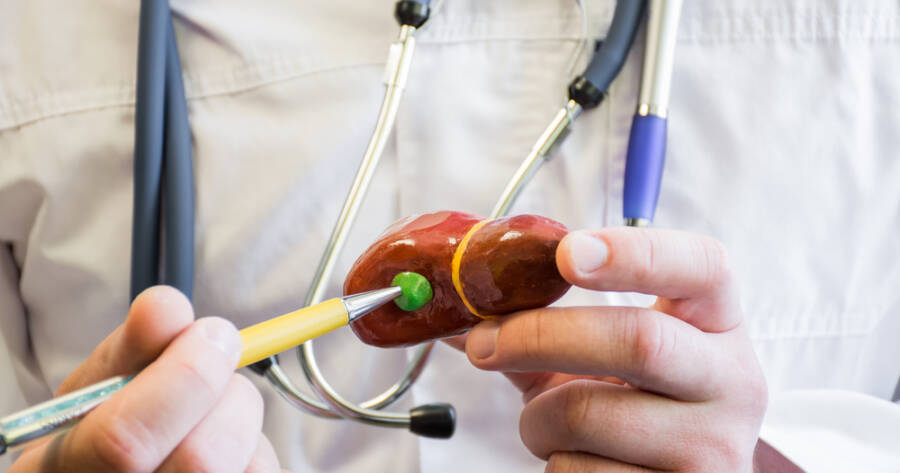The gallbladder plays a critical role in our digestive process. When things go wrong, it can wreak havoc on our body. Fortunately, you can learn everything you need to know with a search online right now, which could help you spot early symptoms.
Storing bile, it aids in fat digestion, but can experience problems, like gallstones or inflammation. These cause pain and more potentially more serious health complications. Understanding the signs of gallbladder issues is essential for treatment.
What is the Gallbladder?
The gallbladder is a small, pear-shaped organ, about four inches long, tucked under your liver in the upper right part of your abdomen. Think of it as a storage room for bile, a special fluid made by the liver.
Bile is a mix of fluids, fat, and cholesterol that’s super important for digesting the fat in the foods we eat. When you eat, the gallbladder sends bile to your small intestine. This helps your body absorb vitamins and nutrients from food into your bloodstream.
Common Gallbladder Issues
Gallstones, are likely the most common gallbladder issue. These small but potent stones form when cholesterol or pigment clumps together. They can be tiny or as large as a golf ball, often blocking bile flow. Sometimes, these stones move into the common bile duct, causing further complications.
If a stone gets stuck, it can inflame the gallbladder, leading to cholecystitis. This inflammation can be acute or chronic, both causing discomfort and potential infection. In severe cases, a perforated gallbladder might occur, where a hole forms, risking serious infection.
Other issues include bile duct obstruction and gallbladder abscess, each posing unique risks and requiring prompt attention. The gallbladder can also develop polyps or become calcified, affecting its function and potentially leading to cancer.
Signs and Symptoms of Gallbladder Issues
Pain in the Upper Right Abdomen
One of the most common symptoms of gallbladder issues is pain in the upper right abdomen. This pain often occurs suddenly and can be quite severe. It is usually a sharp, stabbing sensation that may radiate to the back or shoulder.
This pain is typically more intense after eating, especially fatty meals, which is one of the most common gallbladder attack symptoms.
Changes in Digestive Function
Gallbladder problems often lead to changes in digestion. People may experience chronic indigestion, including bloating, gas, and heartburn.
These symptoms can be mistaken for other digestive issues but are significant when linked with gallbladder problems. Diarrhea or changes in stool color, such as lighter or greasy stools, can also indicate a gallbladder issue.
Jaundice
Jaundice, a condition characterized by yellowing of the skin and eyes, can signal a gallbladder problem. This symptom occurs when bile flow is obstructed, typically by gallstones.
The buildup of bilirubin, a byproduct of red blood cell breakdown, causes this yellow discoloration. Jaundice should always be evaluated by a healthcare professional, as it can indicate serious underlying conditions.
Nausea and Vomiting
Nausea and vomiting can be signs of a gallbladder attack, especially if accompanied by other symptoms listed here. These symptoms often occur suddenly and can be particularly intense.
These symptoms may worsen after eating high-fat or greasy foods, a direct result of the gallbladder struggling to function properly. Persistent or severe episodes of nausea and vomiting warrant medical attention.
Fever and Chills
In some cases, gallbladder issues can lead to fever and chills. This is particularly common if the gallbladder is inflamed, a condition known as cholecystitis. Fever and chills indicate that the body is fighting an infection or inflammation.
It is crucial to seek medical attention if these symptoms occur, as they can signify a serious complication of gallbladder issues.
When to See a Doctor
If you’ve ever had gallbladder issues before, pay close attention to your body. Gallbladder problems can be sneaky; sometimes the symptoms might disappear and then come back. Most gallbladder issues aren’t life-threatening, but they shouldn’t be ignored. It’s really important to get medical help to stop these problems from getting worse.
Certain signs mean you should see a doctor right away. These include really bad belly pain that doesn’t go away, your skin or eyes turning yellow (that’s jaundice), if your stools are pale, or if you have sweating, a low-grade fever, or chills along with these other symptoms.
Learn More About Your Gallbladder Today!
Gallbladder issues can manifest in various ways, but being aware of these five signs and symptoms can prompt early intervention. Pain in the upper right abdomen, changes in digestive function, jaundice, nausea, vomiting, fever, and chills are all indicators that something may be wrong with the gallbladder.
Early detection and treatment are key to managing these issues effectively. Always consult with healthcare professionals if you suspect gallbladder problems. Your health and wellbeing are paramount, and understanding these symptoms is the first step towards maintaining a healthy gallbladder.
